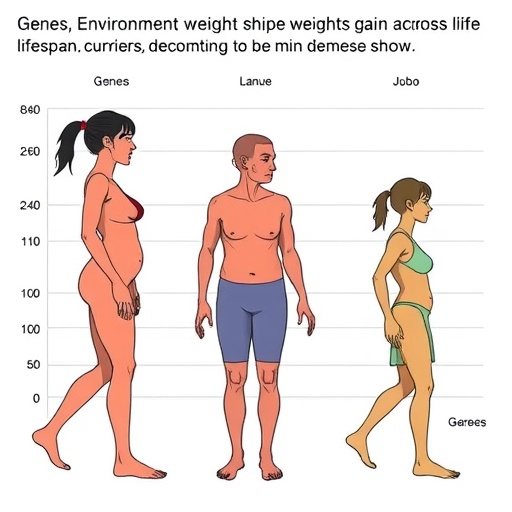In a breakthrough that could redefine the future of solar energy, researchers have unveiled a flexible perovskite/crystalline silicon (c-Si) tandem solar cell achieving a staggering certified power conversion efficiency (PCE) of 33.6%. This state-of-the-art device not only matches the efficiency levels of its rigid counterparts but also offers unprecedented mechanical flexibility and operational robustness, setting new benchmarks in the quest for next-generation photovoltaic technologies.
Flexible solar cells have long been hailed for their potential in specialized applications such as portable power sources, wearable electronics, and curved surface installations. However, engineering these cells to deliver both high efficiency and mechanical durability has been a formidable challenge due to intrinsic material limitations and interface stability issues. The recent work addresses these challenges head-on by combining innovative materials engineering and advanced fabrication techniques to realize a tandem architecture that maximizes light harvesting and charge extraction while enduring mechanical stress.
The tandem cell architecture couples a high-performance perovskite top cell with a crystalline silicon bottom cell, effectively stacking two absorber layers to capture a broader spectrum of sunlight. Achieving an open-circuit voltage (Voc) of 2.015 V — a new record for flexible devices — the tandem efficiently converts incident photons into electrical energy, transcending the performance ceilings typically observed in flexible photovoltaics. This high Voc reflects superior charge carrier separation and minimal recombination losses, which are critical for pushing efficiency boundaries.
A pivotal factor contributing to these advancements lies in the meticulously engineered recombination layer (RL). The researchers employed a reactive-plasma-deposited (RPD) cerium and hydrogen co-doped indium oxide (ICO:H) layer, which not only acts as an effective charge recombination interface but also promotes the uniform assembly of self-assembled monolayers (SAMs). This precise molecular organization enhances interfacial charge transfer, reducing energy barriers and charge trapping, thereby bolstering device performance and longevity.
Complementing the recombination layer is the development of an in-situ annealed zinc-doped indium oxide (IZO) transparent front electrode. This electrode exhibits significantly improved optoelectronic properties, including heightened transparency and electrical conductivity, essential for maximizing light ingress and efficient charge extraction. Moreover, the mechanical resilience of the IZO layer ensures the entire tandem stack can withstand extensive bending cycles without degradation, a crucial metric for flexible solar technologies.
Mechanical endurance testing revealed the tandem solar cell sustained 91% of its initial PCE after 5,000 bending cycles at a bending radius of 17.6 mm. This remarkable resilience marks a substantial leap forward compared to previous flexible photovoltaics, underscoring the success of material and interface optimization. Flexibility paired with durability ensures practical deployment in real-world scenarios where mechanical deformation is unavoidable.
Operational stability poses another significant hurdle for perovskite-based photovoltaics, often prone to degradation under prolonged illumination and environmental stressors. Impressively, the new flexible tandem solar cell exhibits a T80 lifetime exceeding 2,000 hours under continuous illumination conditions, highlighting its persistent energy conversion capability. This durability is pivotal as it addresses one of the major concerns hindering commercialization: maintaining performance stability over time.
In addition to light-induced stability, the tandem device demonstrated exceptional resistance to damp-heat (DH) conditions, maintaining 90% of its initial efficiency after 1,000 hours under high humidity and elevated temperature. Such resilience ensures that these cells can endure diverse climatic environments, broadening their application spectrum beyond controlled indoor settings.
The integration of advanced materials like RPD ICO:H and in-situ annealed IZO represents a synergy that enhances not only the electronic properties but also the mechanical integration of flexible solar cells. These developments exemplify the critical role of interface engineering and transparent electrode optimization in overcoming the intrinsic fragility and instability issues linked to flexible photovoltaics.
This landmark study paves the way for flexible solar cells to transition from niche novelty devices to mainstream power solutions with wide-ranging applications. The ability to achieve high efficiency without sacrificing mechanical durability or operational longevity heralds a future where solar power can be seamlessly integrated into a myriad of form factors, from wearable gadgets to the curved surfaces of vehicles and buildings.
By establishing a certified 33.6% efficiency mark coupled with practical mechanical and environmental stability, this new flexible perovskite/c-Si tandem solar cell challenges the conventional trade-offs between performance and flexibility. It signals a turning point in flexible photovoltaic research, opening avenues for further innovations that can leverage this foundation to deliver even greater efficiencies and functionalities.
As the solar energy landscape evolves, this research underscores the significance of multifaceted innovation — where material science, device engineering, and rigorous testing coalesce — to propel renewable energy technologies into everyday life, making flexible, high-performance solar power a tangible reality for the future.
Subject of Research: Flexible perovskite/crystalline silicon tandem solar cells with high efficiency and mechanical resilience
Article Title: Flexible perovskite/silicon tandem solar cells with 33.6% efficiency
Article References:
Wang, S., Li, W., Yu, C. et al. Flexible perovskite/silicon tandem solar cells with 33.6% efficiency. Nature (2025). https://doi.org/10.1038/s41586-025-09849-4
Image Credits: AI Generated
Tags: advanced materials engineering in solar cellsflexible perovskite solar cellshigh-efficiency photovoltaic technologiesinnovative fabrication techniques for solar cellslight harvesting in solar technologiesmechanical flexibility in solar panelsnext-generation flexible energy solutionsportable solar power solutionsrecord power conversion efficiency in photovoltaicssilicon tandem solar cellstandem architecture in solar energywearable electronics energy sources




